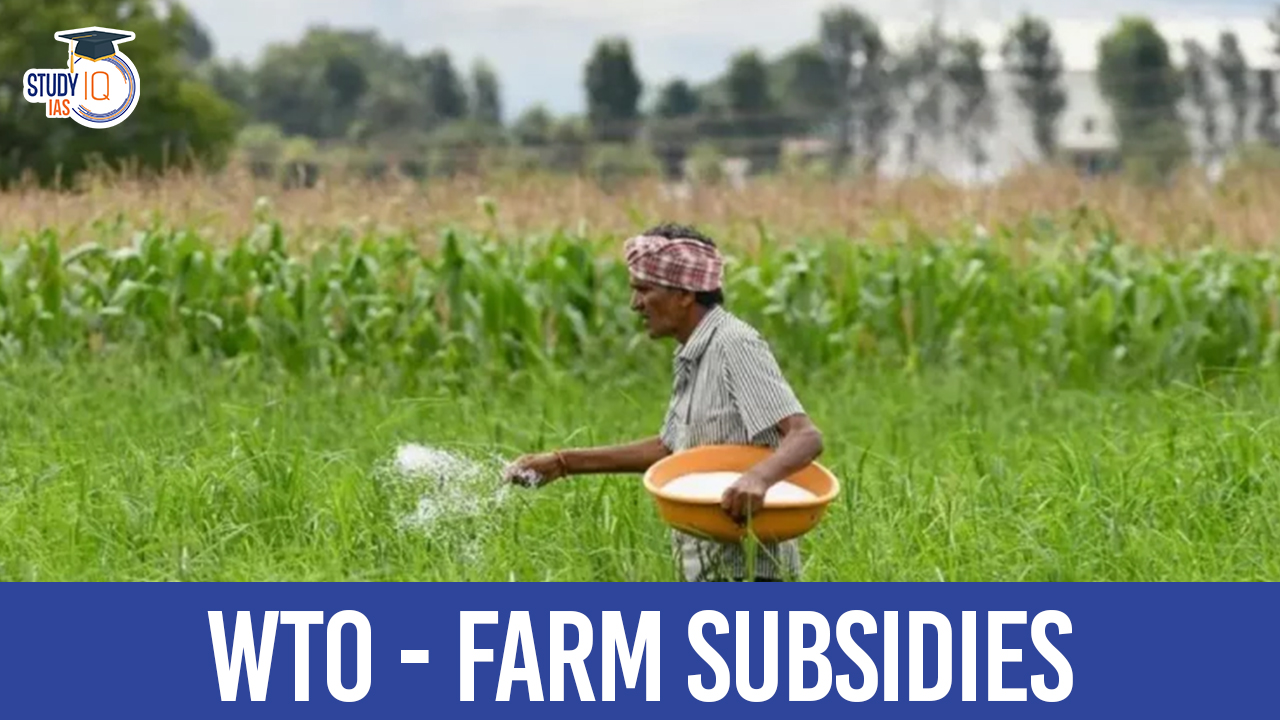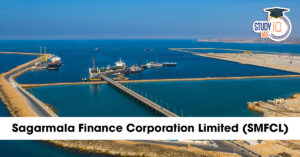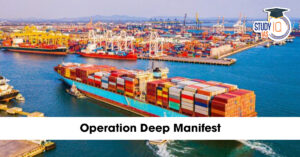Table of Contents
WTO – Farm Subsidies
The World Trade Organization (WTO) plays a crucial role in governing international trade relations, including the highly contentious issue of farm subsidies. Farm subsidies are financial assistance provided by governments to agricultural producers to stabilize prices, ensure food security, and supporting rural economies. However, these subsidies have been subject to extensive debate and criticism due to their potential distortive effects on global trade, market inefficiencies, and negative impacts on small-scale farmers in developing countries.
WTO – Farm Subsidies Current Context
India faces mounting pressure from the World Trade Organization (WTO) regarding its farm subsidies, particularly amidst protests demanding a legal guarantee for Minimum Support Price (MSP). The Cairns Group, representing influential agricultural exporters like Australia, Brazil, and Canada, accuses India of distorting global food prices through highly subsidized public stockholding programs. As India navigates these challenges, tensions rise over the clash between developed and developing countries’ interests at the WTO.
We’re now on WhatsApp. Click to Join
WTO Pressure and MSP Protests
- The Cairns Group alleges that India’s public stockholding (PSH) program distorts global food prices and compromises other countries’ food security.
- India seeks greater flexibility in offering farm support, pushing for a permanent solution at the upcoming inter-ministerial summit in Abu Dhabi. However, deadlock persists due to politically charged issues between developed and developing nations.
- While India is protected by the ‘Peace Clause’ agreed upon in the 2013 Bali ministerial, ambiguities in its provisions expose India to potential disputes.
WTO – Farm Subsidies Overview
| Aspect | Description |
| Purpose | Provide financial support, incentives, or assistance to agricultural producers. |
| Types | Direct payments, price supports, input subsidies, export subsidies. |
| WTO Agreements | Agreement on Agriculture (AoA) regulates domestic support, market access, and export subsidies. |
| Agreement on Subsidies and Countervailing Measures (ASCM) addresses subsidies across all sectors, including agriculture. | |
| Categories of Subsidies | Green Box (minimally trade-distorting), Blue Box (production-limiting programs), Amber Box (most trade-distorting). |
| Implications | Global trade distortion, environmental concerns, equity issues between developed and developing countries. |
History and Evolution of Farm Subsidies
Farm subsidies have a long history, dating back to the early 20th century when industrialized countries began implementing agricultural support programs to protect domestic farmers from volatile market conditions. The policies evolved over time, with significant expansions occurring during periods of economic downturn and war, such as the Great Depression and World War II. In the post-war era, the focus shifted towards achieving self-sufficiency in food production, leading to the proliferation of subsidy programs in many countries.
The Uruguay Round and Agreement on Agriculture
The Uruguay Round of trade negotiations, which concluded in 1994 and established the WTO, marked a significant milestone in the regulation of farm subsidies. The Agreement on Agriculture (AoA), a key component of the Uruguay Round agreements, aimed to address distortions in agricultural trade and promote fair competition. The AoA introduced disciplines on domestic support, export subsidies, and market access, thereby seeking to reduce trade-distorting practices in the agricultural sector.
Types of Farm Subsidies
Farm subsidies can take various forms, including:
- Price Support: Governments intervene in markets by setting minimum prices for agricultural products or purchasing surplus produce to maintain price stability.
- Income Support: Direct payments or subsidies are provided to farmers based on factors such as land ownership, crop production, or income levels.
- Input Subsidies: Subsidies are offered on agricultural inputs such as fertilizers, seeds, and machinery to reduce production costs and increase yields.
- Export Subsidies: Governments provide financial incentives to exporters to sell their agricultural products abroad at below-market prices, thus gaining a competitive advantage in international markets.
WTO Regulations on Farm Subsidies
The WTO administers agreements governing international trade, including regulations pertaining to farm subsidies:
- Agreement on Agriculture (AoA): The AoA, established in 1995, regulates domestic support, market access, and export subsidies in agriculture. It categorizes subsidies into different “boxes” based on their trade-distorting effects:
- Green Box Subsidies: Considered minimally trade-distorting, encompassing support measures such as environmental protection and rural development.
- Blue Box Subsidies: Include payments linked to production-limiting programs, subject to certain conditions.
- Amber Box Subsidies: Deemed most trade-distorting, subject to reduction commitments and constraints.
- Agreement on Subsidies and Countervailing Measures (ASCM): The ASCM addresses the use of subsidies more broadly across all sectors, including agriculture. It prohibits specific forms of subsidies, such as export subsidies, while allowing exceptions for certain developing countries and circumstances.
Implications and Challenges
Farm subsidies within the WTO framework entail several implications and challenges:
- Global Trade Distortion: Subsidies can distort international trade by artificially influencing production levels, prices, and market competitiveness, disadvantaging unsubsidized producers.
- Environmental Concerns: Some subsidies may incentivize unsustainable agricultural practices, leading to environmental degradation and natural resource depletion.
- Equity and Development: WTO regulations on farm subsidies have been criticized for favoring developed countries, constraining the policy space of developing nations to support their agricultural sectors and achieve food security.
Future Outlook and Conclusion
The future trajectory of farm subsidies within the WTO framework remains subject to ongoing debates, negotiations, and evolving global dynamics. Achieving a balance between supporting domestic agricultural interests and fostering fair, sustainable global trade will continue to be a key challenge. As countries grapple with the complexities of agricultural policy, collaboration, transparency, and adherence to multilateral trade agreements will be essential for navigating the intricate landscape of farm subsidies in the 21st century.


 Sagarmala Finance Corporation Limited (S...
Sagarmala Finance Corporation Limited (S...
 Operation Deep Manifest, Key Features an...
Operation Deep Manifest, Key Features an...
 Goods and Services Tax (GST), Objectives...
Goods and Services Tax (GST), Objectives...





















